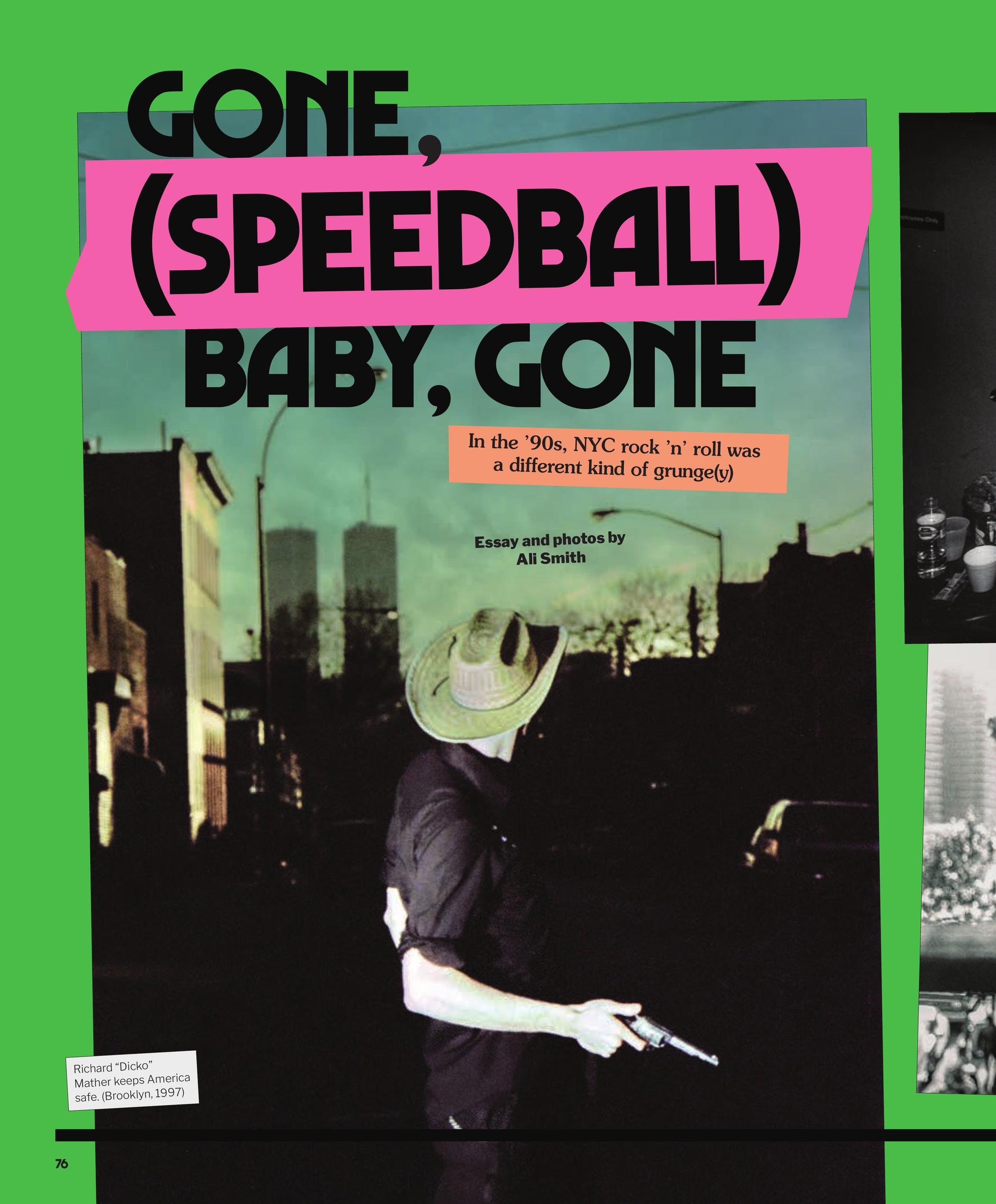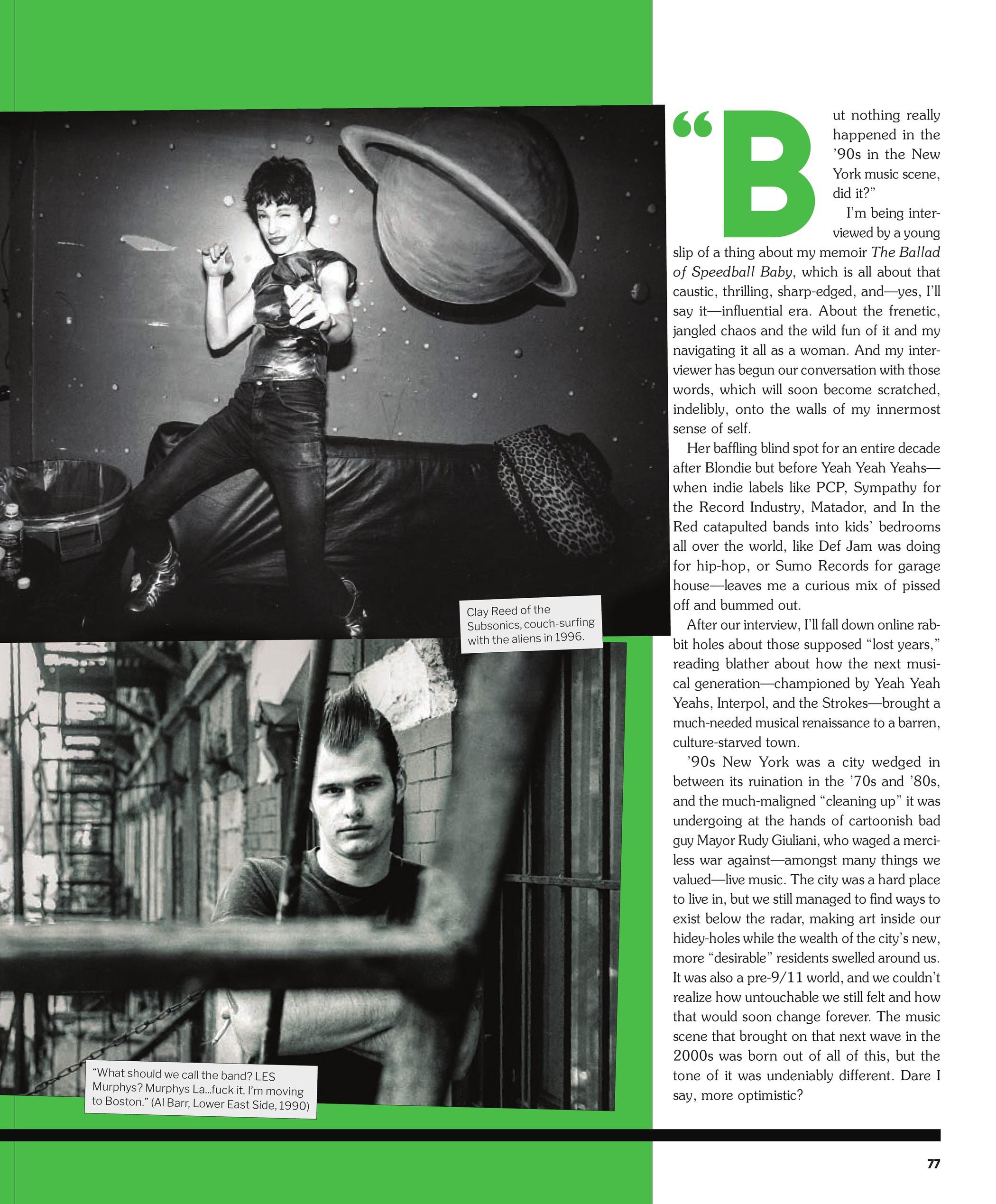Features
GONE, (SPEEDBALL) BABY, GONE
In the ’90s, NYC rock ’n’ roll was a different kind of grunge(y)


"But nothing really happened in the ’90s in the New York music scene, did it?”
I’m being interviewed by a young slip of a thing about my memoir The Ballad of Speedball Baby, which is all about that caustic, thrilling, sharp-edged, and—yes, I’ll say it—influential era. About the frenetic, jangled chaos and the wild fun of it and my navigating it all as a woman. And my interviewer has begun our conversation with those words, which will soon become scratched, indelibly, onto the walls of my innermost sense of self.
Her baffling blind spot for an entire decade after Blondie but before Yeah Yeah Yeahs— when indie labels like PCP, Sympathy for the Record Industry, Matador, and In the Red catapulted bands into kids’ bedrooms all over the world, like Def Jam was doing for hip-hop, or Sumo Records for garage house—leaves me a curious mix of pissed off and bummed out.
After our interview, I'll fall down online rabbit holes about those supposed “lost years,” reading blather about how the next musical generation—championed by Yeah Yeah Yeahs, Interpol, and the Strokes—brought a much-needed musical renaissance to a barren, culture-starved town.

